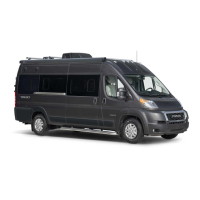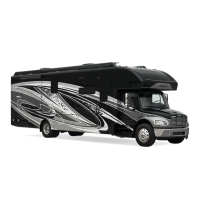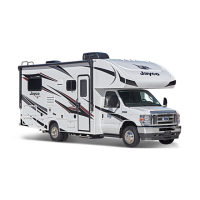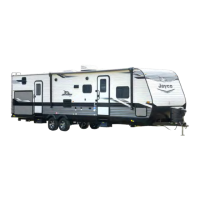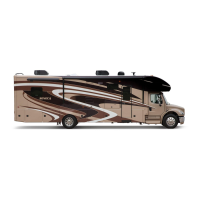38
12-volt DC System
Your motor home lighting is powered by 12-volt electricity. The 12-volt DC system is com-
posed of components that will operate when the following conditions are met:
The house batteries power all interior 12-volt components including the lighting
xtures, water pump, 12-volt motors, 12-volt appliances, etc., when the motor
home is not connected to a 120-volt power source.
12-volt DC power is supplied when the shore power cord is plugged into a 120-
volt external power source. House batteries will be charged also in most situa-
tions.
Power is supplied by the chassis alternator when the chassis engine is running.
The 12-volt fuse panel is labeled to indicate fuse sizes, positions and the components pow-
ered. Fuses are located in the load center.
Before replacing a fuse, always turn o the electrical components protected by it.
1. Disconnect the shore power cord.
2. Inverter should be OFF.
3. Remove the fuse panel cover to check fuses.
4. Pull the fuse straight out of the fuse block.
5. Insert a new fuse of the same specied voltage, amperage rating and type in the original
location.
The fuse panel label should be kept permanently axed to your recreation vehicle. Fuses
will not oer complete protection of the electrical system in the event of a power surge or
spike.
There may be one or more 12-volt DC power outlets in your recreation vehicle. When the
12-volt DC outlet is used as a power source for an electric appliance, make sure the appli-
ance operates on 12-volt DC power and that it consumes less than 60 watts (5 amps) of
power.
Replacement fuses must be of the same voltage, amperage rating and type.
doing so may cause a re by
overheating the RV wiring.
Keep the protective dust cap on the 12-volt DC outlet when not in use to pre-
vent ingestion of foreign material and potential short circuit conditions.
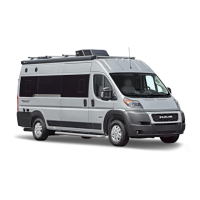
